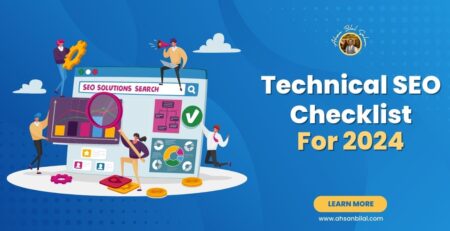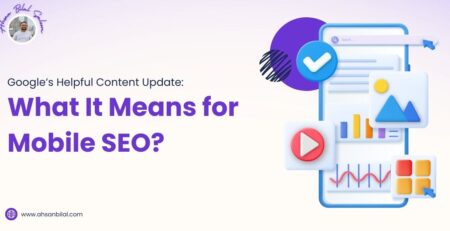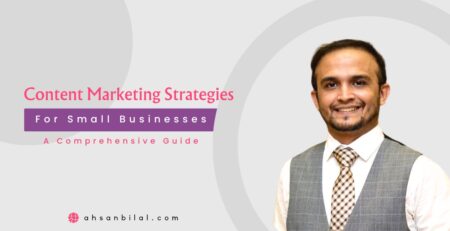Rank Higher, Click Faster: SEO Tips And Tricks
In today’s competitive digital landscape, it’s not just about being found online—it’s about making a memorable impact. SEO is no longer just about keywords; it’s a multifaceted approach that includes technical precision, insightful content, and strategic marketing. To make your website stand out and achieve higher rankings and faster clicks, here’s a comprehensive guide to SEO tips and tricks designed to propel your site to the top of search engine results.
Focus on High-Quality Content
Creating content that resonates with your audience is at the core of any effective SEO strategy. High-quality content increases your site’s relevance, engages readers, and keeps them on your pages longer—all factors that contribute to better search engine rankings. Here are key content tips to keep in mind:
- Target Audience-Centric Content: Understand your audience’s needs and interests to create content that solves their problems and answers their questions. Use surveys, social media insights, and analytics to get a clear picture.
- Incorporate Long-Form Content: Longer, in-depth posts typically perform better in search rankings, as they provide comprehensive information and are more likely to attract links and shares.
- Refresh Old Content: Regularly update existing articles with new information, visuals, and keywords to keep them relevant and engaging for your readers.
Optimize for User Experience (UX)
User experience is essential for SEO, as search engines like Google prioritize sites that offer a positive experience. Here’s how to optimize for UX:
- Mobile-Friendly Design: With over half of internet traffic coming from mobile devices, having a responsive design that adapts seamlessly to any screen size is crucial.
- Fast Loading Times: Slow pages drive visitors away and increase bounce rates. Optimize images, use caching, and limit redirects to improve page load speeds.
- Easy Navigation: Ensure your website’s structure is easy to navigate, with intuitive menus and clear calls to action (CTAs). This helps users find information quickly, improving their overall experience.
Strategic Keyword Research
Keywords still play an essential role in SEO. However, it’s not about stuffing as many keywords as possible into your content but about strategically incorporating relevant terms. Here’s a smarter way to approach keyword research:
- Use Long-Tail Keywords: These are specific phrases that are less competitive and often have higher conversion rates. For example, instead of “SEO tips,” target “SEO tips for eCommerce websites.”
- Prioritize Intent-Based Keywords: Understand the intent behind user searches. Target keywords based on whether users are looking for information, making a purchase decision, or seeking a specific service.
- Incorporate Synonyms and Related Terms: Google’s algorithms are getting better at understanding context, so including variations and synonyms of your target keywords makes your content more natural and comprehensive.
Leverage Schema Markup
Schema markup, also known as structured data, is a code you can add to your website to help search engines understand the content on your pages better. It can make your pages eligible for rich snippets, which can improve click-through rates. Examples include:
- Product Markup: Add product details like ratings, price, and availability directly in search results, attracting more clicks.
- FAQ Schema: Include schema markup for frequently asked questions. This can help occupy more space in search results and provide immediate answers to users.
- Review Schema: Implementing review schema can enhance your credibility and visibility in the SERPs by displaying your ratings right in the search results.
Optimize Title Tags and Meta Descriptions
Your title labels and meta portrayals are urgent for Website optimization and can intensely impact navigate rates. Here’s how to craft them effectively:
- Keep Title Tags Concise: Aim for around 60 characters or less, as longer titles can be truncated in search results.
- Include Primary Keywords: Incorporate your target keywords at the beginning of your title for relevance.
- Use Compelling Language: Make your Meta descriptions and titles catchy and enticing. Action words like “discover,” “learn,” or “boost” can prompt clicks.
- Write for the User, Not Just the Algorithm: Focus on creating titles and descriptions that are engaging and directly address user needs.
Image Optimization
Visuals are a powerful asset for engaging users, but without proper optimization, they can slow down your website and hurt your rankings. Follow these image optimization practices:
- Use Descriptive Alt Text: Alt text helps search engines understand what each image is about and also enhances accessibility. Include your primary keywords when relevant.
- Compress Images for Faster Load Times: Large images can slow down page speeds, which impacts SEO. Use instruments like TinyPNG or ImageOptim to pack pictures without losing quality.
- Implement Image Sitemaps: Adding an image sitemap can help search engines find your images faster and increase your chances of appearing in image search results.
Build Quality Backlinks
Backlinks, or links from other websites to yours, are one of the most important factors for SEO success. Quality is more important than quantity, so focus on these strategies:
- Guest Blogging: Contribute high-quality content to reputable blogs in your industry to gain exposure and earn backlinks.
- Resource Link Building: Create valuable resources like guides, infographics, or eBooks that other websites in your niche would want to link to.
- Build Relationships with Influencers: Collaborate with industry influencers to promote your content, which can lead to additional links and credibility.
Enhance Internal Linking Structure
Internal linking helps distribute page authority throughout your site, improves user engagement, and assists search engines in crawling your site more effectively. To improve your internal linking:
- Use Relevant Anchor Text: Use descriptive, keyword-rich anchor text that tells users and search engines what the linked page is about.
- Link to High-Value Pages: Focus on linking to your most important pages, such as service pages or top-performing blog posts, to enhance their visibility.
- Maintain a Natural Flow: Don’t overdo internal links. Ensure they fit normally inside the substance and offer some benefit to the peruser.
Utilize Analytics to Monitor and Adjust
SEO isn’t static; it requires ongoing analysis and adjustment. Regularly track your performance to identify what’s working and what needs improvement:
- Set Up Google Analytics and Search Console: These tools offer insights into your traffic, bounce rates, and keyword performance.
- Track Key Metrics: Focus on essential SEO metrics like organic traffic, keyword rankings, and conversion rates.
- Analyze User Behavior: Use tools like heatmaps and session recordings to understand how users interact with your site and identify areas where they may be dropping off.
Final Thoughts
Implementing effective SEO tips and tricks can help you achieve higher rankings and drive more clicks, but remember that SEO is a long-term process. Consistency is key—continue optimizing, analyzing, and adjusting your strategy to keep up with evolving search algorithms and user preferences. By focusing on quality content, technical SEO, and user experience, you’ll build a website that not only ranks higher but also engages and retains visitors.










